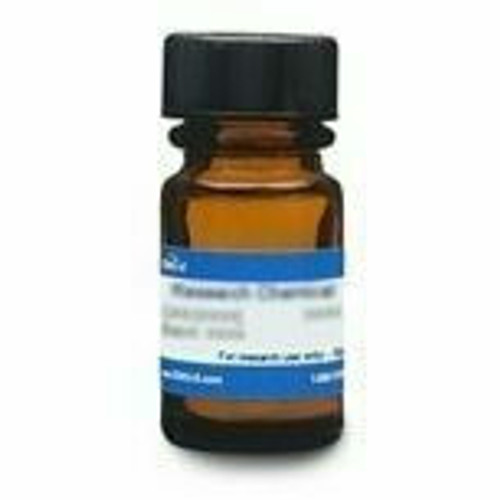Cyromazine is a triazine insect growth regulator used as an insecticide and acaricide. It is an aminotriazine cyclopropyl derivative of melamine. Cycromazine undergoes hydrolysis at extreme pH or photodegradation leading to the stable heterocyclic structure melamine. It can be metabolized in plants and animals and undergoes degradation in the environment to form melamin. In veterinary research, Cyromazine is used as an ectoparasiticide. It has activity against dipterans and some other insects. It is also used for food safety as Cyromazine and its metabolite melamine can appear as residues in milk. It is a candidate for disease vector control and management of insecticide resistance due to absence of cross-resistance with common insecticides.
Cyromazine is soluble in DMSO and methanol.
| Mechanism of Action | The precise mechanism of action of Cyromazine remains unknown. It may affect the nervous system of the immature larval stages of certain insects or inhibit chitin and cuticular proteins. It may also act on some steps of the sclerotization of the cuticle. |
| Molecular Formula | C6H10N6 |
| Spectrum |
Cyromazine has activity against Diptera and some other insects. It has activity against Australian sheep blowfly (Lucilia cuprina), the causal agent of blowfly strike, a disease that affects sheep. It is not used as an insecticide for household pets. |
| Plant Biology Applications |
Cyromazine can be used for pest control in agricultural crops. |
| Insect Biology Applications |
Cyromazine is a triazine insect growth regulator (IGR) used as an insecticide. A fly larvicide, it can be used as a feed additive for house fly (M. domestica) to inhibit larvae in poultry/horse manure. Formulations with Cyromazine have been used to control fly infestations in livestock breeding applications. |
| References |
Van de Wouw AP, Batterham P, Daborn PJ (2006) The insect growth regulator insecticide cyromazine causes earlier emergence in Drosophila melanogaster. Arch Insect Biochem Physiol. 63(3):101-109 PMID 17048245 Darriet F, Zaim M, Corbel V (2008) Laboratory evaluation of Cyromazine against insecticide-susceptible and -resistant mosquito larvae. J. Amer. Mosquito Control Assn. 24(1):123-126 |


